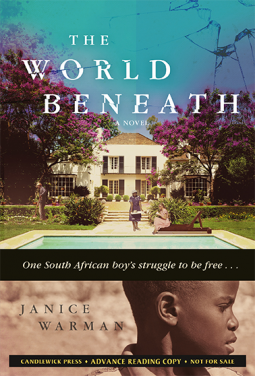 When I plan to review a book, I read little about it before I begin my own reading because I don’t want to bias my evaluation. In the case of The World Beneath by Janice Warman, this restriction was a disadvantage.
When I plan to review a book, I read little about it before I begin my own reading because I don’t want to bias my evaluation. In the case of The World Beneath by Janice Warman, this restriction was a disadvantage. In the author’s note at the end she writes, “I grew up as a privileged white child surrounded by poverty and deprivation in a world we did not see.” That world was South Africa in 1976 which becomes the setting for her book. She draws on her own experience to give us the story of Joshua who lives with his mother in the maid’s room in the back yard of her wealthy white employers. He understands little of what is happening around him but knows the need to be unobserved. Slowly the world around him begins to change and he must make some dangerous choices. Those versed in the history of South African apartheid will recognize situations and names before he does and know how perilous his decisions may be.
The novel contains tension from the family situation and the world around it and keeps the reader engaged. The problem I found was the lack of character development even with Joshua. There was a reason for that! After I finished the book and did a bit of reading about it, I discovered the author was a veteran journalist. I wished I had known that as I was reading. I would have understood that the book read like a documentary that is hyped for days before it is shown on TV.
I recommend the book as a read together book for parent and child or in a classroom, beginning with the note in the endpapers on Amnesty International and the information about resources to use fiction to teach about human rights. The connection from this story to other examples of injustice seems to be natural with this quote from the afterword, “We are all born with human rights, no matter who we are or where we live, but we are not always allowed access to them. Human rights are about justice, truth, and freedom. They are part of what makes us human.”